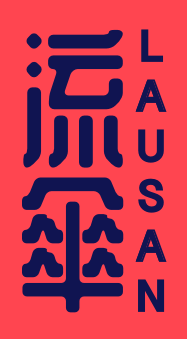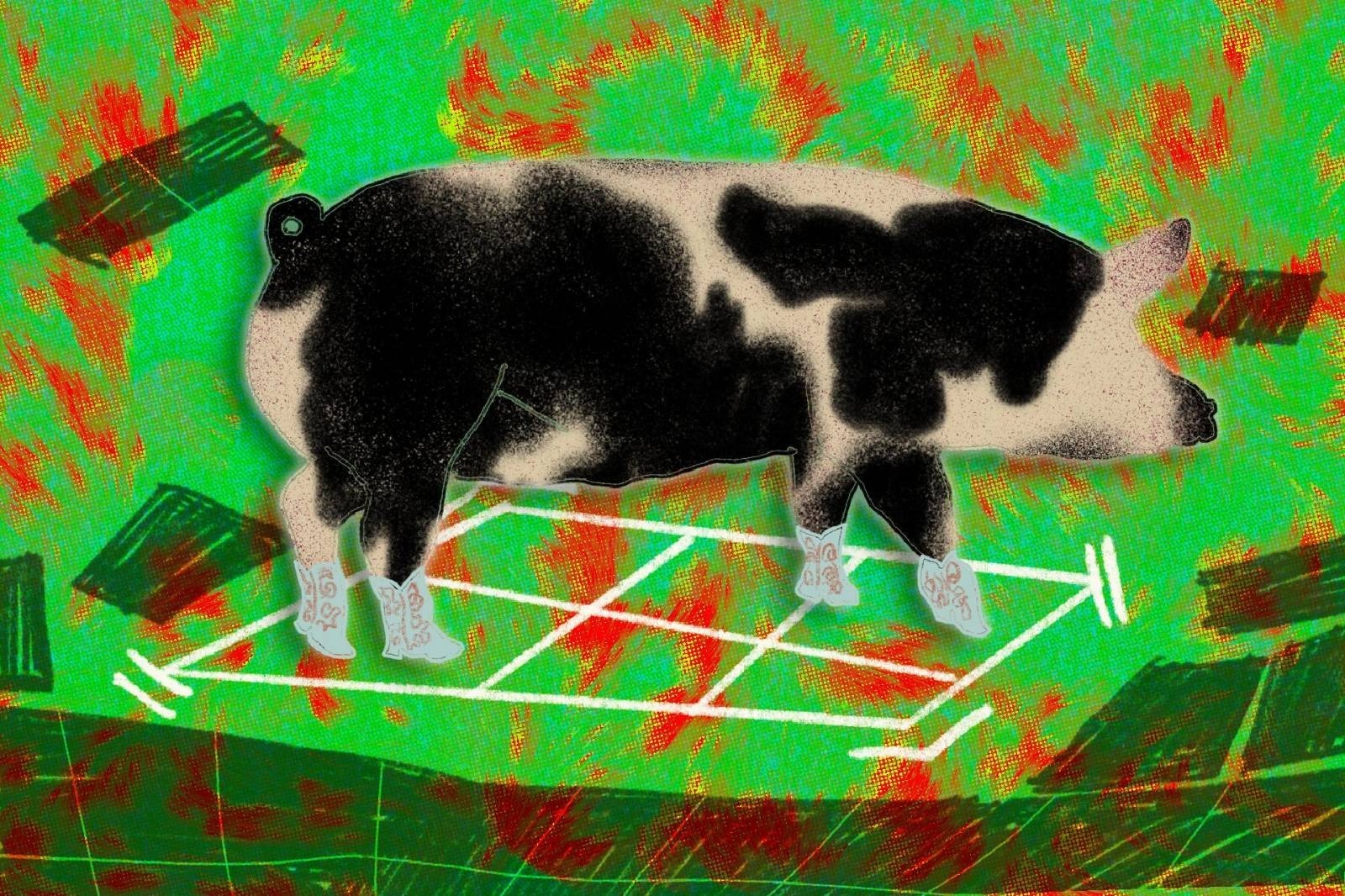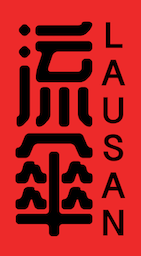During China’s Great Leap Forward, there was a government slogan: “The key link of agriculture is grain and the key link of industry is steel.” In order to achieve agricultural production targets, the central government allowed local officials to enforce the policy brutally, often forcing farmers to grow only grain rather than cash crops, regardless of the suitability of the land. The result was that the output of both grain and cash crops declined, which led to ordinary people suffering starvation and malnourishment. By the end of the Cultural Revolution, the slogan had been adapted into a popular jingle: “Grain is the key link, sweep away everything else(以糧為綱,全面掃光).” Today, as new concerns about food security emerge, the farce of “sweeping away everything else” is being played out once again in China.
Growing ginger is a crime
On May 8, a pig farmer in Fujian province injured three “nongguan” (農管), or “Agricultural Administration Officers,” with a nail gun while resisting the forced demolition of his pig shed. After the man fled, police offered a reward of 50,000 yuan for his arrest. Follow-up reports indicate that the suspect has turned himself in.
While resistance to forced demolition is not uncommon in China in recent years, the development of the nongguan as a new agricultural police force is relatively new. In November last year, China’s Ministry of Agriculture and Rural Affairs issued the Measures for the Administration of Comprehensive Agricultural Administrative Law Enforcement, which states that the government would “strengthen the administration of comprehensive agricultural administrative law enforcement agencies and law enforcement personnel” and “standardize the conduct of agricultural administrative law enforcement.”
Only then did the public notice that the Integrated Rural Administration Bureau had already been established in 2019. Public anger has been mounting against these new law enforcement officers who were unleashed into the countryside to confiscate what farmers have produced. Inspired by the infamous “chengguan” (城管), or Urban Administration Officers, people give the new law enforcement agency and its staff a similar moniker. The latter, however, soon became no less vicious than their predecessors during the Great Leap Forward. Censorship in China makes it difficult for readers to know exactly what kind of law enforcement action would cause a pig farmer to attack the nongguan, but some other recent incidents might provide some food for thought. In April this year, 1.5 mu of ginger fields were eradicated by the nongguan in Hunan on the grounds that growing ginger does not meet food security requirements under the relevant law and that the land must be used to grow rice.
Furthermore, circumstantial evidence reveals that the legal rules governing nongguan operations are vague enough for these officers to use escalating types of force, short of carrying firearms. In February, a list of equipment purchases by nongguan in a Tibetan city was revealed online. The list includes signal blockers, electric batons, and stab-proof vests. This may suggest that they are armed enforcement officers. In May, an online video showed an incident of a banana field eradication in Guangxi province, where farmers who resisted were dragged away by nongguan.
Crops not parks
Ostensibly, nongguan only deal with farmers. However, bizarre agricultural policies are also being pursued in cities. For example, in recent years, the government of Chengdu in Sichuan province spent billions of yuan to build a circle of ecological parks around the city. Then, in March of this year, people found that large areas of parkland had been converted into farmland. In the face of angry questions, the government then argued that the parks were originally planned to include large eco-agricultural areas. If that is true, one must ask why the supposed farmland had not been built in accordance with the original plan from the beginning? What went wrong in the execution of the original plan for farmland? Who should be accountable for such a waste of public money? Similar incidents are not just happening in Chengdu—in some places, even rural roads and ponds are being turned into farmland.
Back in 2020, the State Council—the executive organ of the National People’s Congress—released a notification explicitly raising alarms over food security, demanding that all lower level officials ban the practice of “feinonghua” (非農化)—banning peasants from turning agricultural land into non-agricultural land. The ban was later further extended to “feilianghua” (非糧化), or banning peasants from abandoning grains to make ways for other crops. It was followed by the No. 1 Document of the CCP Central Committee in 2023. This document calls for, among other things, “ensuring that national grain production remains above 1.3 trillion catties, and that all provinces (including autonomous regions and municipalities directly under the central government) should stabilize the size of farmland, focus on unit yield and strive to increase yields.” Xi Jinping himself has also repeatedly stressed that China’s arable land cannot be less than 1.8 billion mu. Given the publicity of this document, all levels of state and local bureaucracy naturally see the implementation of the policy as a priority.
Many cases of controversial enforcement by nongguan have been related to forcing farmers to convert land for fruit, livestock, aquatic, and cash crops into grain land. The Measures promulgated last November also seem to provide the basis for such enforcement.
The rationality of the irrational
It seems unbelievable that China does not have an adequate grain supply for human consumption. Although China’s overall self-sufficiency in grain production (which includes feed production for animals) has declined, there is no shortage of staple foods. According to CCTV News on May 11, China’s staple food self-sufficiency rate for human consumption is above 100 percent, with a per capita holding of 483 kilograms, above the internationally recognized 400 kilograms safety line. The problem, however, is that domestic feed production is not enough for the country’s livestock. In order to produce enough meat to satisfy the growing appetite of its people, China still needs to import grain (e.g. soybeans) to ensure its feed supply. According to the General Administration of Customs, China imported 146,872,000 tons of grains last year, down 10.7% year-on-year, but the cost increased by 10.5% year-on-year. Apparently, imported feed consumes much of China’s foreign exchange. So, we might hazard a guess that the government is trying to save foreign exchange by eliminating cash crops to make way for increasing domestic feed production. Perhaps the CCP’s perception is that the lack of bananas (or other cash crop fruits) for Chinese people would not cause any major problems.
But if the recent trend of eliminating cash crops and parks to make way for grain production, even if it is only a regional phenomenon, is designed to save foreign exchange on grain imports, the cost of implementation itself may be so high that it renders the effort useless. The costs begin to pile up immediately: the salaries of the huge army of nongguan; the waste of the millions, if not billions, of yuan spent on the building of the now demolished green spaces and parks; compensation to farmers for their losses (if the CCP does not want more violent resistance); and, not to mention the unproven benefits of rushing to change the land use in the first place.
All of the above costs should have deterred sensible officials from undertaking what people have called “converting forests into cropland.” The chemical components of soil can be very different, even within the same general areas. Finding out which pieces of land are best for certain plants is a complicated science requiring careful scientific planning. Agricultural planning must foreground the democratic decision-making and rational expertise of local farmers and agronomists—but the CCP’s bureaucratic structure prevents this. More often, in the rush to implement policies, local officials are only interested in putting on performances for their superiors. The irrational behaviour of this bureaucracy is only rational from the point of view of its own interests, and the expansion of its ranks implies that there are now more resources at the disposal of the department heads. The creation of new departments also means creating a great number of jobs for potential new officials as well, a phenomenon accurately described in “Parkinson’s Law”: that bureaucrats will expand their numbers indefinitely relative to their timespan, not the workload, if not checked by outside forces.
There is also speculation about the real motives of the No. 1 Document. It is thought that the CCP may want officials to prepare for war, and ensuring food self-sufficiency is one of the requirements, so local governments are assisting this task in their own ways. Due to censorship, we cannot know how far such a campaign has gone at the moment. Now even some official media began to question such chaotic implementation of the policy of protecting food security. On May 21, the Economic Review warned that
On top of the administrative and legal measures, from now on we need to take economic measures as well, and provide economic incentives (to the farmers). In moments when the local (governments) need to control the “feinonghua” and “feilianghua”… they should not resort to casual and rough measures, for instance simply cutting down what the farmers have grown.
A return to “commandism”
It is common knowledge that the Chinese phrase “digging out the flesh to mend sores” (挖肉補瘡)—that the treatment is worse than the disease—is simply a way of victimizing working people without helping to cultivate food security. Yet this kind of brutal implementation of questionable policies is commonplace in the history of the CCP. The lack of political democracy in commandism compels destructive methods of social planning by the central government, setting targets based on the whims of its top leaders. Most of the time the party only orders local authorities to meet targets without telling them how to do so wisely. On the other hand, in order to meet their targets, local governments do not discuss the most effective implementation details with other stakeholders, including affected sectors and residents. This was the case with the Great Leap Forward and more recently, the Three Gorges Dam Project.
This style of administration, formerly known as “commandism” (命令主義), came under fire after the Cultural Revolution from both private citizens and party cadres. However, the party-state’s work of planning rarely faces rigorous and critical reviews. After the suppression of the 1989 pro-democracy movement, commandism once again became more intense, and accordingly, the party became increasingly intolerant of criticism, something which eventually reached its height during the “Zero-Covid” period. Today’s “converting forests to farmland” is another iteration of this dynamic. It is not difficult to counter commandism. Chen Duxiu, one early founder of the CCP, already prescribed the remedy: democracy and science, he argued, cannot exist without the other. But the modern CCP, believing in its own omnipotence, is absolutely unwilling to take the medicine to cure the disease.
The rise of the nongguan marks how this new expression of bureaucratic commandism manifests in new forms of policing that structure China’s food production planning. The nongguan shows that without a system of political democracy, the management of food production demands violent coercion. With food security becoming an increasingly urgent issue for China—amplified by the demands of inter-imperialist rivalry on the global stage—the regime’s investment in new modes of policing ensures that capital accumulation (and its violent mechanisms) remain the CCP’s driving motor.
Postscript
Since early May 2023, there have been unverified reports about certain local adjustments of the jurisdiction or power of the nongguan. In general, it has been increasingly hard to verify details about the operations of both local and central governments.



